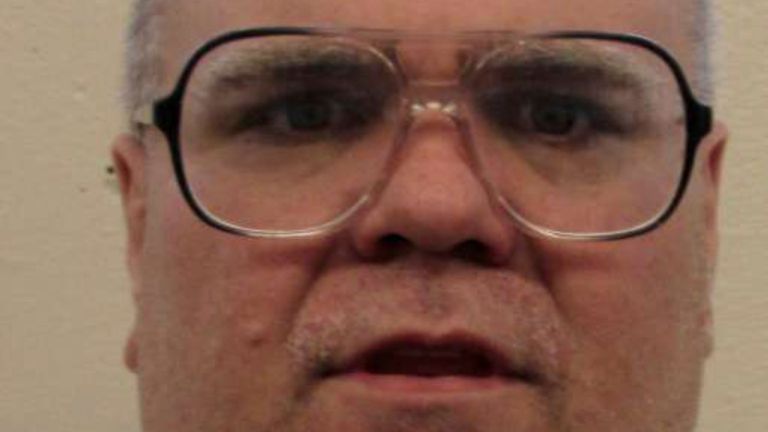A prisoner on death row in Alabama could be executed next week using a new, untried method that deprives the body of oxygen.
James Houts, a deputy state attorney general, told a federal judge that it is “very likely” nitrogen hypoxia could be available for Alan Miller’s execution next week.
The technique was approved by the state in 2018, but it has never been used or tested.
It would cause death by forcing the inmate to breathe only nitrogen, depriving them of the oxygen needed to maintain bodily functions.
Miller was convicted of killing three men in a workplace shooting rampage in 1999 near Birmingham, Alabama.
He is currently due to be executed on 22 September by lethal injection, but is seeking to block this going forward.
Miller has said he opted for nitrogen hypoxia instead of lethal injection due to a fear of needles, but corrections officers lost his paperwork.
At a court hearing on Monday, US District Judge R. Austin Huffaker Jr asked whether Alabama was ready to carry out executions by nitrogen hypoxia.
Mr Houts said the method could be available as soon as next week and that officials are finalising a protocol for how it would work.
However, a final decision on when to use the new method would be up to Corrections Commissioner John Hamm.
What is nitrogen hypoxia?
In 2018, Alabama became the third state to authorise the untested use of nitrogen gas to execute prisoners, after Oklahoma and Mississippi.
At the time, state law gave inmates a brief window to select it as their preferred execution method.
Nitrogen makes up 78% of the air inhaled by humans and is harmless when inhaled with oxygen. The theory behind the execution method is that changing the composition of the air to 100% nitrogen would cause the inmate to pass out and then die from lack of oxygen.
States began proposing nitrogen hypoxia as an alternate execution method because of difficulty obtaining lethal injection drugs and ongoing litigation over the humaneness of that method.
Those in favour of it have argued it will be simpler and more humane.
‘Human experiment’
Trip Pittman, a Republican lawmaker who sponsored the 2018 legislation, theorised it would be similar to how aircraft passengers pass out when a plane depressurises.
However, critics have likened the method to human experimentation.
Read More:
Inmate on death row for 25 years ‘totally innocent’
Texas’ oldest death row inmate says he will give victim’s family ‘big hug in heaven’
Robert Dunham, executive director of the Death Penalty Information Center, said it “is completely untested”.
While proponents have theorised it would be quick and painless, Dunham noted that states once said the same thing about the electric chair.
The American Veterinary Medical Association’s euthanasia guidelines say inert gas hypoxia is acceptable, under certain conditions, for the euthanasia of chickens, turkeys and pigs but is not recommended for other mammals such as rats.






